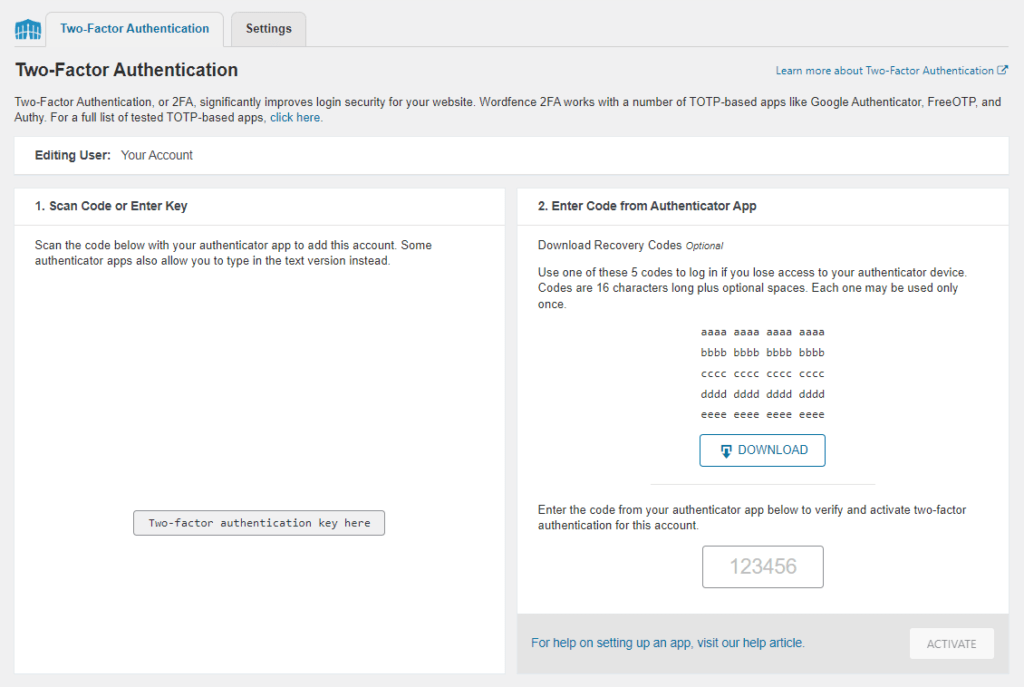WordPress is a fantastic platform, but its popularity makes it a prime target for hackers. Whether you run a blog, a business site, or an eCommerce store, securing your WordPress site should be a top priority. Why? Because a hacked site can lead to data breaches, lost revenue, and even blacklisting by search engines. Don’t worry! The good news is that you can prevent most attacks by following some simple security measures. Let’s dive into the best ways to protect your WordPress site from cyber threats. WordPress security is in your hand!
Secure Your WordPress Login and Admin Panel
Your login page is the first place hackers try to break in. Here’s how to lock it down.
Use Strong Login Credentials
It sounds obvious, but many people still use weak passwords like “password123” or “admin” as their username. Don’t do this!
Instead:
✅ Use a unique username (not “admin” or your domain name).
✅ Set a long, complex password with a mix of uppercase, lowercase, numbers, and special characters.
✅ Use a password manager like LastPass or Bitwarden to generate and store secure passwords.
Hackers use automated bots to guess your credentials—don’t make it easy for them!

Enable Two-Factor Authentication (2FA)
Even if a hacker gets your password, they won’t get past 2FA. Two-factor authentication (2FA) requires an extra verification step, like a code from an authenticator app (Google Authenticator, Authy).
How to enable it?
- Install a security plugin like WP 2FA, Google Authenticator, or Wordfence.
- Activate 2FA for admin accounts (and other users if needed).
- Use an authentication app instead of SMS for better security.

Change the Default Login URL
By default, WordPress login pages are at /wp-admin or /wp-login.php—and hackers know this.
Solution: Change the login URL using a plugin like WPS Hide Login.
Instead of yourwebsite.com/wp-admin, you could use something like:yourwebsite.com/secret-login-page (just don’t forget it!)
Limit Login Attempts
Brute-force attacks involve hackers trying multiple username/password combinations until they get in. Protect your WordPress site by doing this
Fix this by:
- Installing Limit Login Attempts Reloaded or Login Lockdown.
- Setting a limit (e.g., 3-5 failed attempts before blocking the IP).
This makes it much harder for hackers to brute-force their way in!
Automatically Log Out Idle Users
Leaving an admin account logged in for too long is risky—someone could hijack the session.
✅ Set up auto-logout for inactive users with a plugin like Inactive Logout.
✅ Choose a reasonable time limit (e.g., 15-30 minutes of inactivity).
This prevents unauthorized access if you ever leave your computer unattended.
Protect Your WordPress Files and Database
Your database stores everything—from posts to user information. If a hacker gets in, they can cause serious damage. This is essential WordPress security tip.
Secure the wp-config.php File
The wp-config.php file holds critical database credentials. To protect it:
1️⃣ Restrict access by adding this to your .htaccess file:
<files wp-config.php>
order allow,deny
deny from all
</files>
2️⃣ Move wp-config.php one directory above the root folder (WordPress will still find it).
Disable File Editing from WordPress Dashboard
If a hacker gains admin access, they can inject malicious code into theme and plugin files.
Prevent this by adding this line to wp-config.php:
define('DISALLOW_FILE_EDIT', true);
This removes the ability to edit files from within WordPress.
Change the Default Database Prefix
WordPress databases use wp_ as a prefix by default, making them vulnerable to SQL injections.
To improve security:
✅ Change the prefix from wp_ to something random (e.g., mywp_abc123).
✅ Use security plugins like WP-DBManager to rename existing tables.
Restrict PHP Execution in Sensitive Folders
Hackers sometimes upload malicious PHP files to execute attacks. To disable PHP execution in folders like /uploads/, add this to a new .htaccess file inside those folders:
<Files *.php>
deny from all
</Files>
Disable XML-RPC
XML-RPC is an outdated feature that allows remote connections but is often exploited for brute-force attacks.
To disable it, add this to .htaccess:
<Files xmlrpc.php>
Order Deny,Allow
Deny from all
</Files>
Or just use a security plugin to turn it off!
Enhance WordPress Hosting and Server Security
Choose a Secure Hosting Provider
Not all hosting providers are secure. Choose one that offers:
✅ Daily backups
✅ Built-in firewalls & malware scanning
✅ DDoS protection
Some great options: Hostinger, SiteGround, Kinsta, WP Engine.
Set Up File & Folder Permissions
Files and folders should have the correct permissions to prevent unauthorized access:
- Folders:
755 - Files:
644 - wp-config.php:
600(extra secure!)
Enable an SSL Certificate
SSL encrypts data between your site and visitors, protecting logins, payments, and personal info. WordPress security rely on this.
Free SSL: Let’s Encrypt (available on most hosts).
Premium SSL: Offers higher security and warranties ($10,000+ coverage).

Regular Website Maintenance and Monitoring
Keep WordPress, Themes, and Plugins Updated
WordPress updates patch security holes, so always update:
- Core WordPress (enable auto-updates if possible).
- Themes & plugins (delete unused ones!).
Outdated software = an open door for hackers.

Monitor User Activity and Security Logs
Keep an eye on who logs in and what they do using plugins like:
✅ WP Activity Log
✅ Sucuri Security
If something looks suspicious, take action immediately!
Run Malware Scans Regularly
Use security plugins like:
- Wordfence (firewall + malware scanner)
- Sucuri (website firewall)
- MalCare (auto malware removal)
Create Regular Backups
If your site gets hacked, a recent backup can save you.
✅ Use UpdraftPlus, BlogVault, or Jetpack for automatic backups.
✅ Store backups offsite (Google Drive, Dropbox).
Final Thoughts: Strengthen Your WordPress Security Today
🔒 Security Checklist:
✔️ Strong passwords & 2FA
✔️ Secure hosting & SSL
✔️ Update everything regularly
✔️ Scan for malware & create backups
Cybersecurity is an ongoing process—but with these steps, your WordPress site will be far more secure.
Now it’s your turn! Want a perfect WordPress website by experts? Contact me now!

